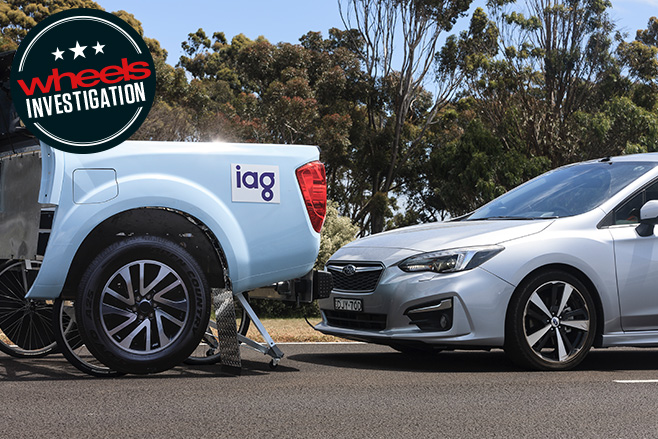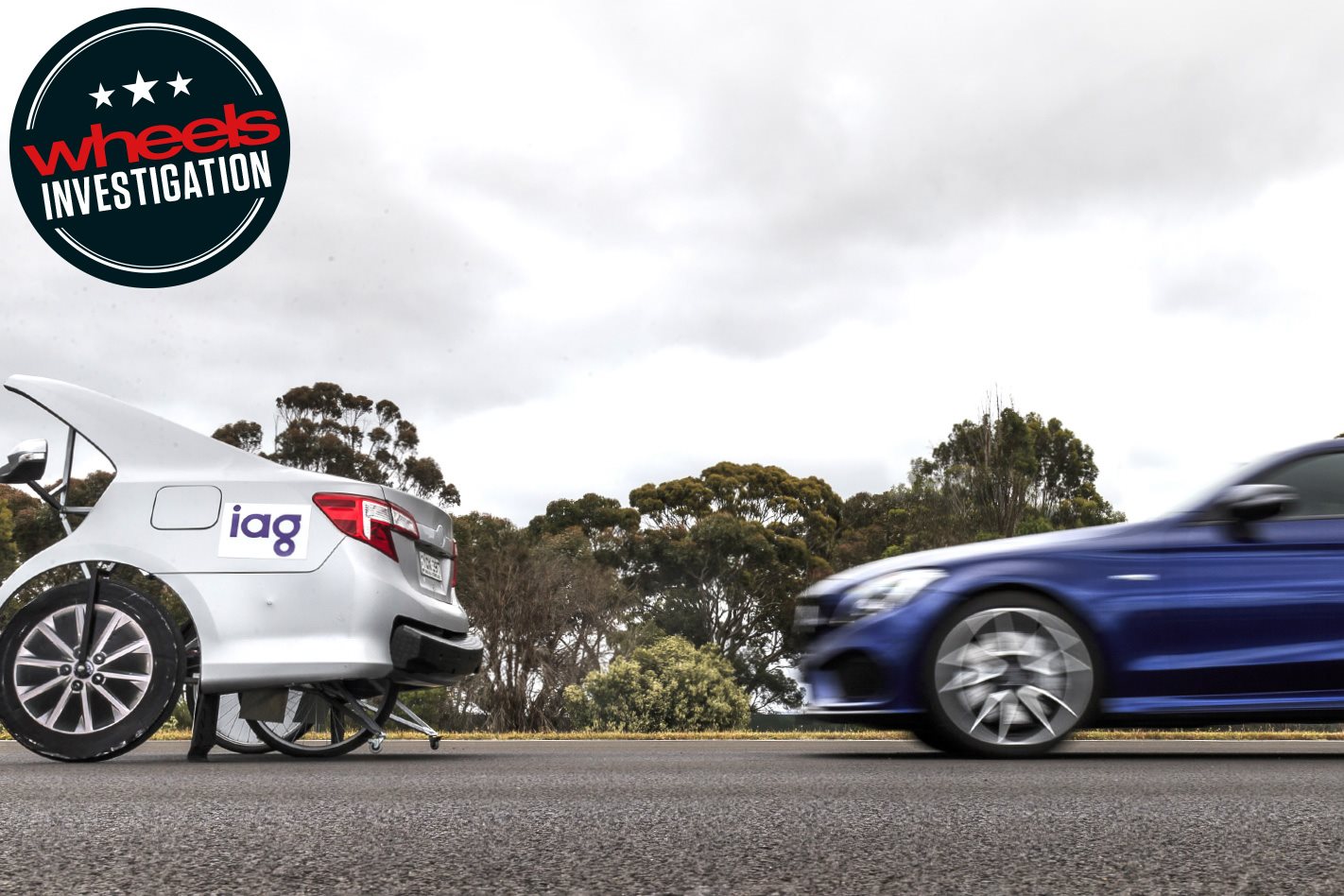SOME of the latest crash avoidance systems on popular cars can be fooled by the high-riding design of utes and SUVs, according to an exclusive Wheels assessment conducted as part of our 2017 Car of the Year testing.
During testing, the autonomous emergency braking systems on some new cars failed to recognise the higher rump of a ute – closer in height to many popular SUVs – potentially leaving drivers exposed in common nose-to-tail crashes these systems are designed to avoid.
The revelation comes after extensive independent testing at the Ford Proving Ground in conjunction with Insurance Australia Group.
Cars from Jaguar, BMW and Volkswagen worked almost flawlessly when driven at a regular sedan test target at between 10 and 25km/h, reinforcing the usefulness of AEB systems.
However, each failed to consistently identify a ute target that simulates the rear-end style of cars that account for more than half of all new vehicle sales in Oz.
The head of IAG research, Robert McDonald, said it appeared some carmakers were optimising their AEB systems to pass the Euro NCAP test rather than trying to detect a wide variety of real-world scenarios.
The Euro NCAP testing of AEB employs a target ‘vehicle’ that extends to ground level, made of a soft material designed not to damage test vehicles at impact speeds up to 50km/h. But the target also includes various reflectors and other materials to ensure it works with sensors typically used in AEB systems. According to Euro NCAP, the target “is developed to have the radar signature, reflectivity and visual signature comparable to that of a ‘C’ segment vehicle”.

“We know the European target vehicle doesn’t represent a ute very well,” McDonald told Wheels. “The height and the shape is a challenge for some AEB systems.”
McDonald said IAG had just added a ‘ute’ target vehicle because “we think they’re more representative of the average vehicles that are in Australia”.
In an era of increased crash avoidance technology – aligned with the development of autonomous technology – he said it was important to ensure cars could respond to a wide range of often challenging real-world scenarios. “We welcome the adoption of AEB by Australian carmakers and want to encourage the further sophistication of the technology.”
Half of the 28-strong COTY 2017 field had at least one model fitted with AEB. All 14 of those vehicles were tested against the sedan and ute target vehicles, with most accurately detecting and reacting to the sedan. But at least seven of the 14 tested failed to detect the ute at least once.
In defending the AEB performance of the Jaguar F-Pace and XF, Jaguar questioned the validity of IAG’s target vehicles, suggesting they may not represent real vehicles. “In conjunction with our supplier we have conducted a series of 15 ‘classification’ runs in a Jaguar F-Pace at various speeds against a Nissan Navara pick-up truck and in all cases the system successfully classified the vehicle as a ‘target’ and would have initiated braking,” Jaguar said in a statement.
McDonald, meanwhile, said cars that struggled to pick multiple objects often used only one method of detection, such as radar or cameras. By contrast, the Mercedes-Benz E-Class uses five multi-range radars, stereo cameras and 12 ultrasonic sensors, while the Volvo S90 pairs radar and camera technology to detect objects as diverse as caravans, boats, buses, trucks, bikes, pedestrians and large animals.
Full COTY results and AEB testing will be published in the February issue of Wheels and on Wheelsmag.com.au on February 2.





